The year is 2001. I am 15 years old and it is my first time visiting Yellowstone National Park. My mother stands next to me at Morning Glory Pool as we take in the amazing colors of the water and, next to us, a woman takes coins from her purse and prepares to toss them in. Speaking swiftly, my mother catches her before the coins are thrown, her voice firm but not raised: “Excuse, me there’s a sign right there saying not to throw things into the pool.” The woman responds that she wants to make a wish, that her coins are not trash. We push on—mentioning the incredible extremophiles living in these pools and explaining how objects blocking the water’s source change the entire environment, including the bright colors that bring visitors to these pools in the first place. Soon, the coins are put away.
For many of us who enjoy the outdoors, Leave No Trace (LNT) principles have always been a guiding hand. From how we plan our adventures to where we set up camp and the journey in-between, the seven principles prioritize respect for the land, wildlife and other adventurers. But what happens when we see others violating LNT?
It’s not explicitly written as such, but there’s a strong argument to be made for an eighth LNT principle: Speak up when you see the other seven being violated.
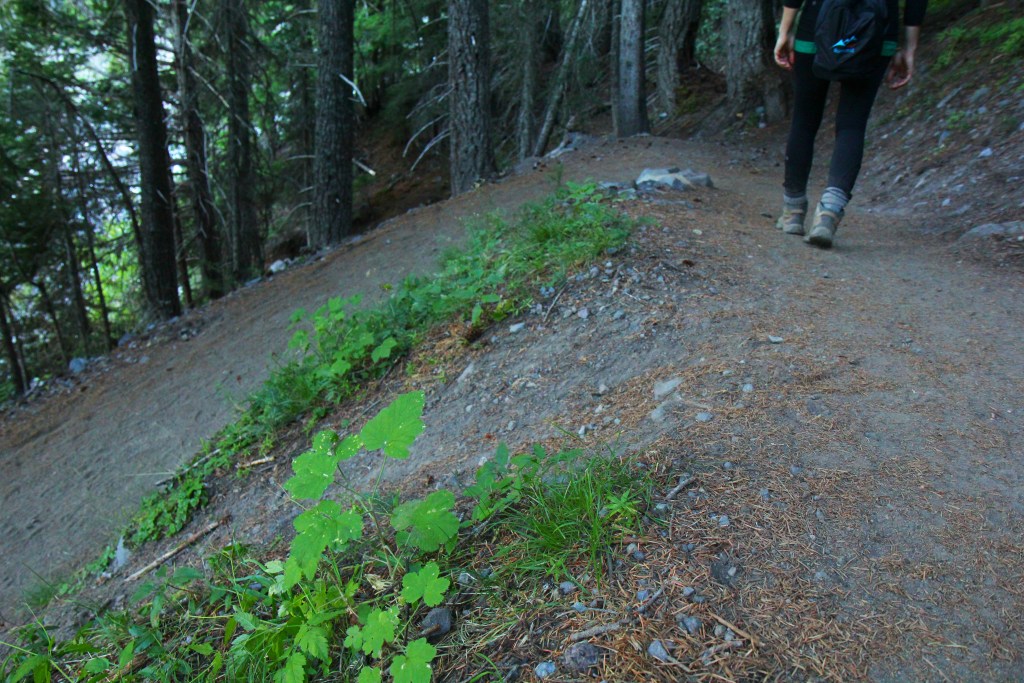
It can be tempting to take the shorter path, but cutting switchbacks leads to erosion of the hillside and disturbs vegetation. (Photo Credit: Gemina Garland-Lewis)
Although there are many LNT violations you might encounter on the trail, this article will focus on some of the most common mishaps, like cutting switchbacks, picking wildflowers, littering, not putting out campfires, setting up camp in non-established sites and trampling on fragile ecosystems.
Here are some things to keep in mind as we consider how to approach this unwritten rule:
Consider the situation. Is a person or animal in immediate danger? If so, your communication style should focus less on diplomacy and more on ensuring safety. Getting too close to wildlife or wandering off-trail for a nice cliff-edge view end in injury or worse for a number of outdoor adventurers every year. Oftentimes, they’re in search of that perfect shot. Keeping the recommended distance from wildlife not only helps keep you safe but the animals as well, so it’s a win-win. Recognize warning signs and make sure you speak up if you see someone getting too close to wildlife.
Be compassionate. Consider starting with small talk to build rapport—comment on the amazing views, learn about their experience level, or ask them if they’ve been on this trail before or if they’re from the area. Different geographic regions often have different local rules and regulations that visitors may be unaware of, including things like where you can set up camp and whether you can have campfires at a certain elevation. Additionally, different areas have their own types of environments—someone from the Pacific Northwest may understand the fragility of the alpine meadows, but may not be aware of the same fragility of cryptogamic soil when visiting a desert ecosystem.
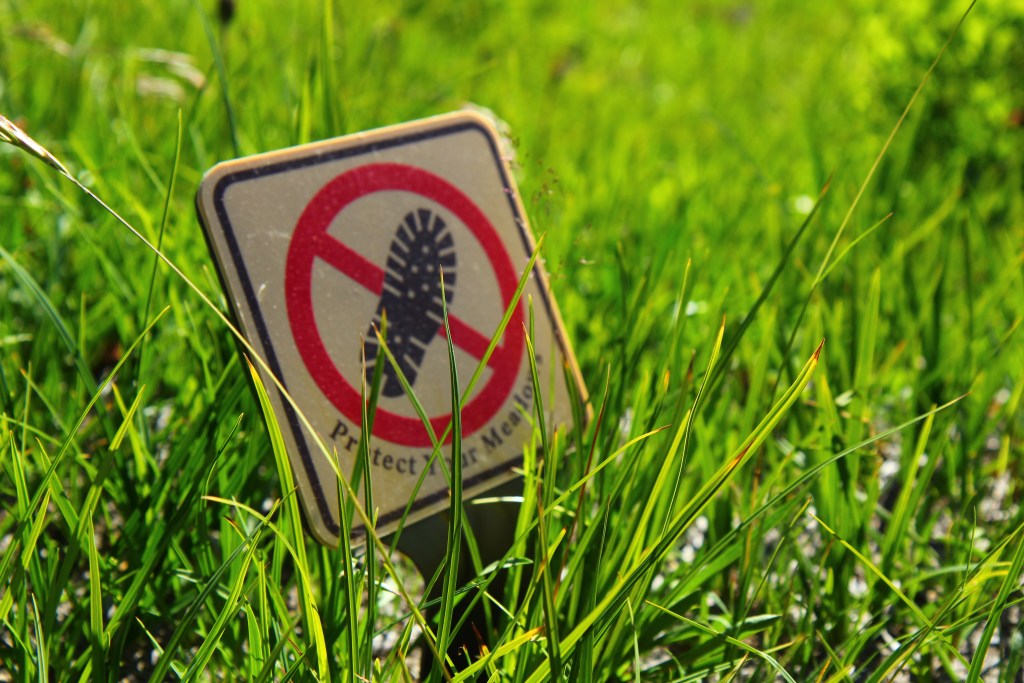
Photo Credit: Gemina Garland-Lewis
Use this opportunity to educate—don’t assume people know about LNT. Give an explanation of why it’s harmful to engage in the behavior you’re observing to show you’re not just trying to be a “nature cop.” For instance: “I just learned it can take months for food waste to biodegrade. Plus, leaving human food near the trail can attract wildlife, which not only disrupts their natural diet and behavior, but can lead to them associating humans with food, which can cause more conflict between us. It’s always best to pack out everything you packed in.” Or: “Did you know these wildflowers take years to recover if they’re stepped on? A ranger was telling me it’s because of the short growing season in the alpine environment and the shallow soils—this makes them really sensitive to even a little disturbance. It’s important that we stay on the trail to keep this ecosystem intact and make sure it’s still around for future generations to enjoy, just like we are.”
We’re in this together. Remind people their actions alone might not make that big of a difference, but that collectively our actions make a big difference. For instance: “I just read that almost a million people visit Yellowstone during July. It’s no wonder that the parks don’t allow us to take anything. If we all took even just one wildflower or one of these cool rocks, there would be nothing left in no time.”
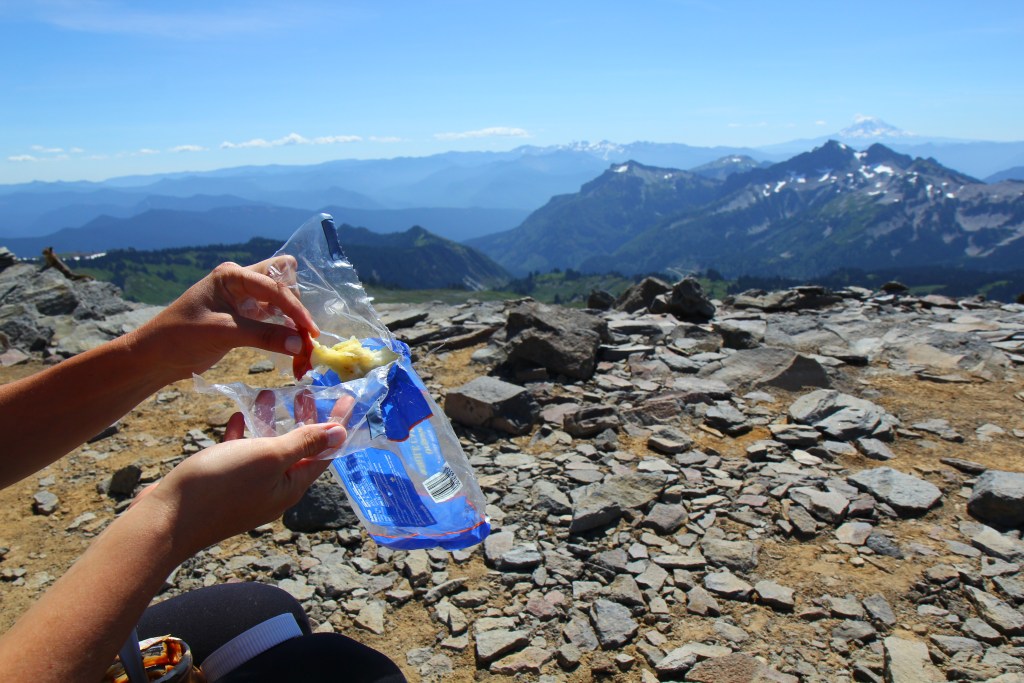
Pack a trash bag, and collect your own trash and any other waste you might see along the way. (Photo Credit: Gemina Garland-Lewis)
Lead and educate by example. Pick up trash. Walk through the muddy section of a trail rather than blazing a new one on the side. Help block off switchback cuts. Disassemble makeshift fire rings in fire-free zones. You get the idea.
Use your voice beyond the trail. In this day and age, speaking up extends to social media. Platforms like Instagram make it easy to share our beautiful and wild places with millions of people and inspire newcomers to get outside—which is great—but is also a lot of responsibility. Make sure your images don’t congratulate or normalize bad behavior.
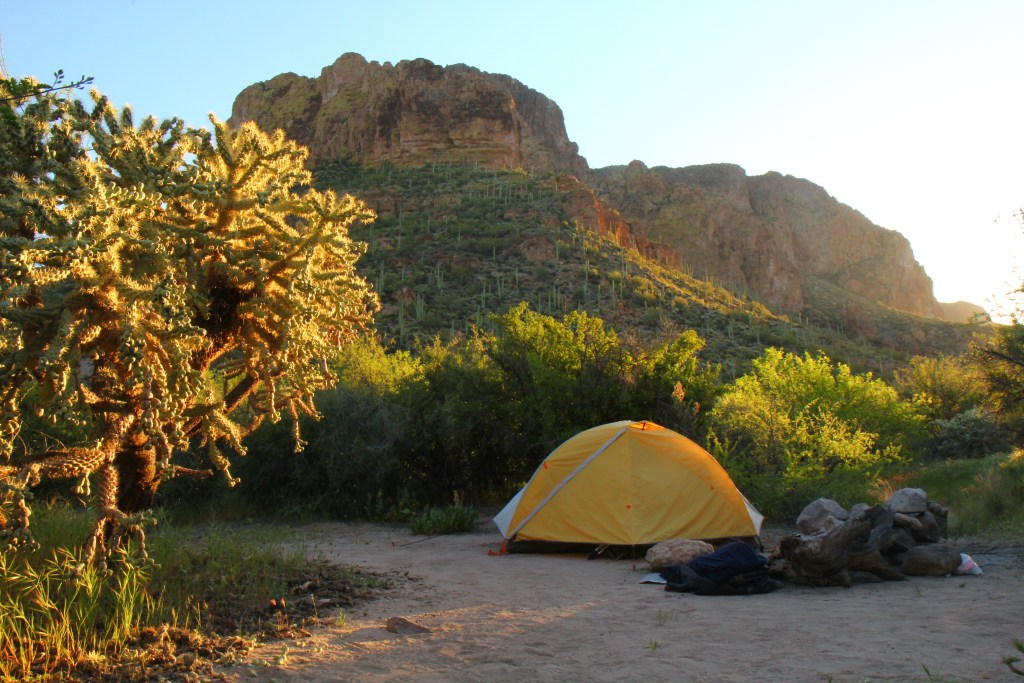
Set up your backcountry camp in established sites to prevent harm to vegetation or fragile ecosystems. (Photo Credit: Gemina Garland-Lewis)
One of the most common reasons people give for not saying something is that they’re fearful for their own safety. Although we should never put ourselves in a dangerous situation, one thing we can all do to help mitigate this problem is to be kind, approachable and receptive to those who engage with us. Remember: We were all beginners at one point and no matter how long you’ve been out there, there’s always something new to learn. And as more and more people get outside these days, there’s an even greater need to advocate for minimizing our impact.
If we truly want to protect these incredible places, it’s our responsibility to the environment and to those adventurers who come after us to make sure we speak up for them.
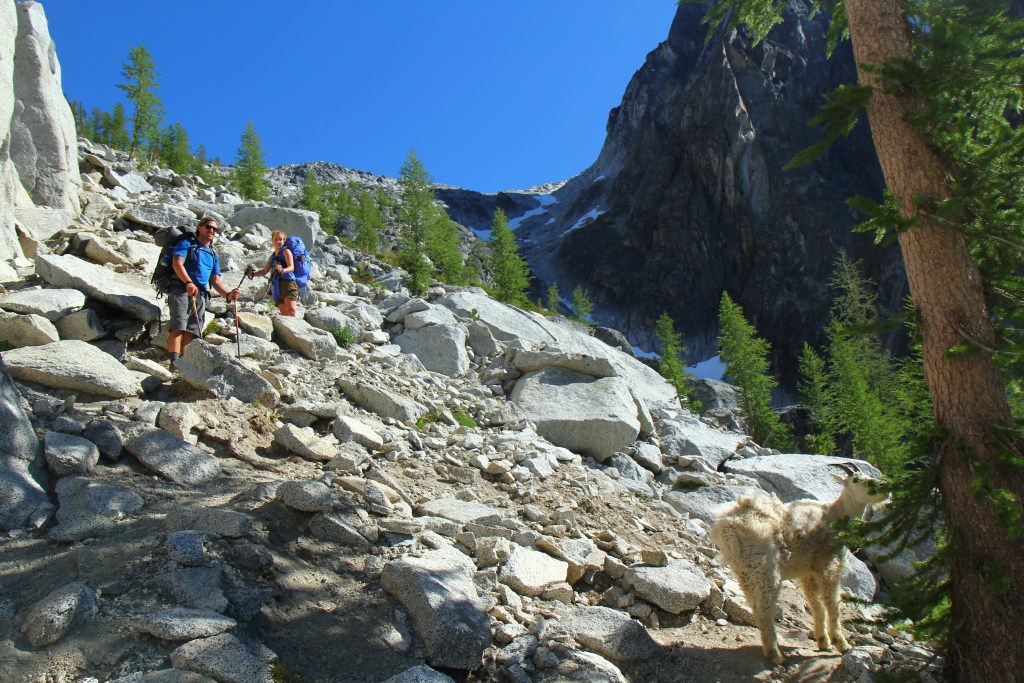
Remember to keep a safe distance from wildlife and watch for any signs of annoyance or aggression. (Photo Credit: Gemina Garland-Lewis)
If you’re searching for the right words, we have some quick responses to get you started.
| Common LNT Mishaps | Response |
| Cutting switchbacks | “So much back and forth here—a shortcut totally seems nice. The trail will stay in a lot better shape if we stick to it, though.” |
| Wildflower picking; shell, rock, pinecone, etc. collecting | “These are so pretty/cool/rad, right? It’s better to leave it here, though. If we all took one there’d be nothing left.” |
| Feeding smaller animals (chipmunks, birds, etc.) | “Aren’t these guys cute? Fearless little beggars, too. They’ll stay healthier without the human food—they’ve got plenty to eat around here.” |
| Leaving trash, micro-trash, pet waste bags | “Hey there. Heads up you just lost/left some trash on the trail. Easier to take it with you now—I always find it’s so easy to forget or find again on the way out.” |
| Leaving natural food waste | “Looks like a tasty snack! Seems totally compostable, I know, but if it doesn’t grow here naturally it’s a good idea to pack it out like trash.” |
| Walking/climbing in fragile landscapes | “I don’t think we’re supposed to walk/climb on that though. Once these areas are damaged, it can be hard for them to recover.” |
| Biking off-trail to pass hikers/slower bikers | “Happy to get out of your way with a heads up. Safer for all of us and the trail to have the bikes stick to it. Have a good ride!” |


